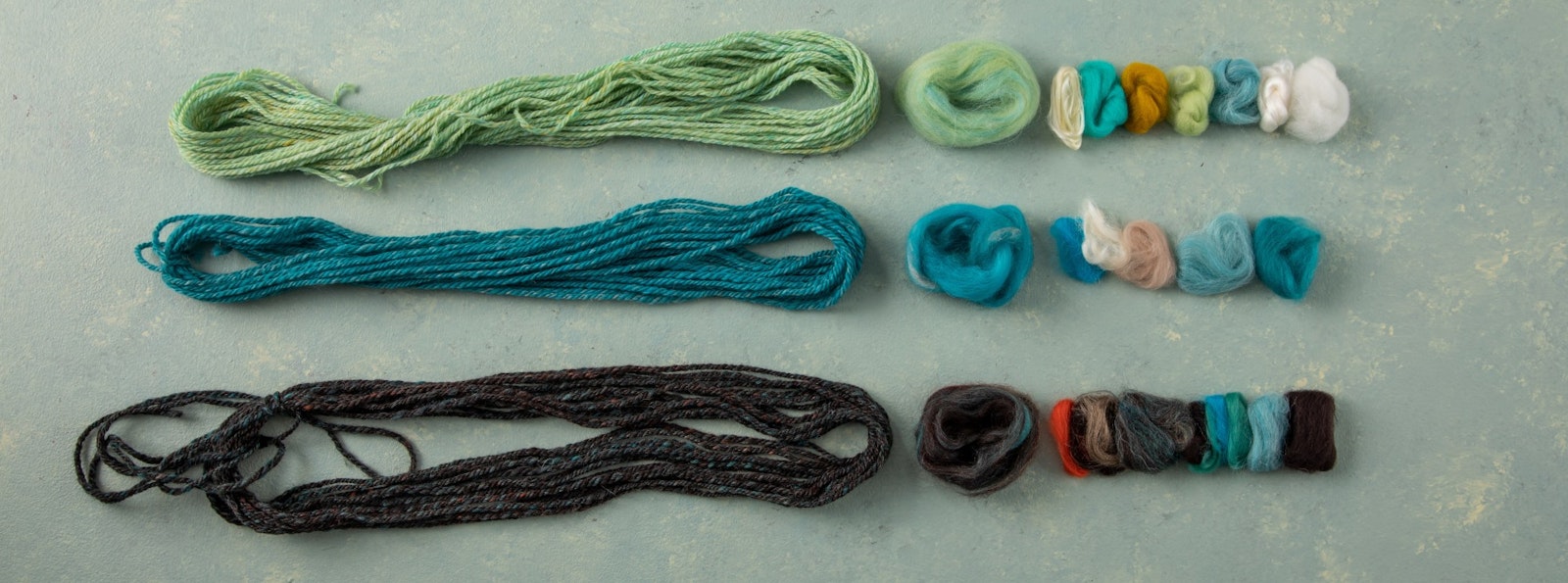Editor’s note: In the Spring 2022 issue of Spin Off, Kim McKenna created two versions of her Ancient Earth Shawl to show how both solid and handpainted fibers can be blended using her diz and blending board method. Each shawl began with notes and a “blueprint” to keep track of the colors used and the order in which they were blended. Here, Kim explains more about her process and shows an example of her record-keeping method.
I am often asked how I replicate and keep track of the colors and fibers that go into a particular blend. Using the Ancient Earth Shawl pattern in the Glacial Flour colorway (see Spin Off Spring 2022, page 52), I will walk you through my process.
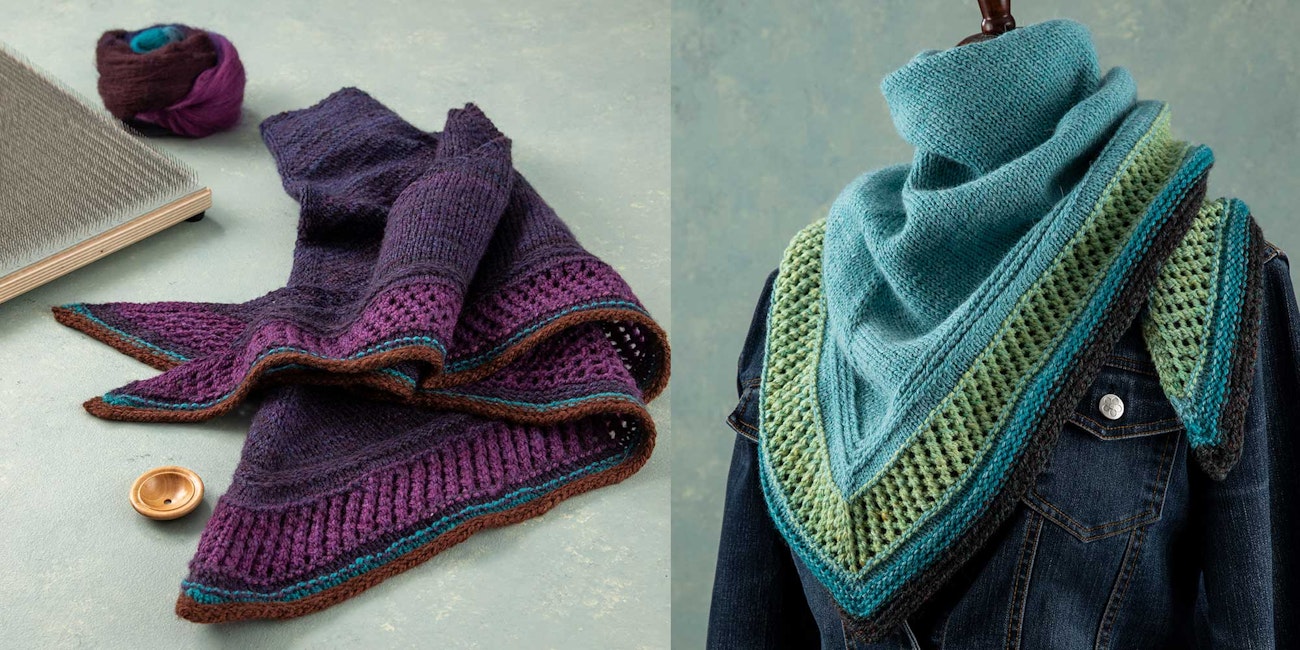
Kim created two colorways of her Ancient Earth Shawl. The Aphanite colorway uses handpainted fibers (left), while the Glacial Flour colorway blends undyed and dyed solid colors (right). Photo by Matt Graves.
I started with a palette of solid colors in various fine wool, alpaca, and silk blends. I needed four colors total and decided the body of the shawl would be an aqua called Matterhorn. It was perfect, so, my main color (MC) is Matterhorn.
Next, I turned to sampling for the three contrast colors (CC). I knew the base color I wanted for each: CC1 I used Chartreuse, CC2 Jade, and CC3 Bitter Chocolate. But each of those base colors on their own would prove too stark, so they needed small shots of additional colors to help them gently work into the palette and transition smoothly from one color to the next. I blended the fibers using my blending board and diz, which you can read about in more detail in my article in the Spring 2022 issue of Spin Off.
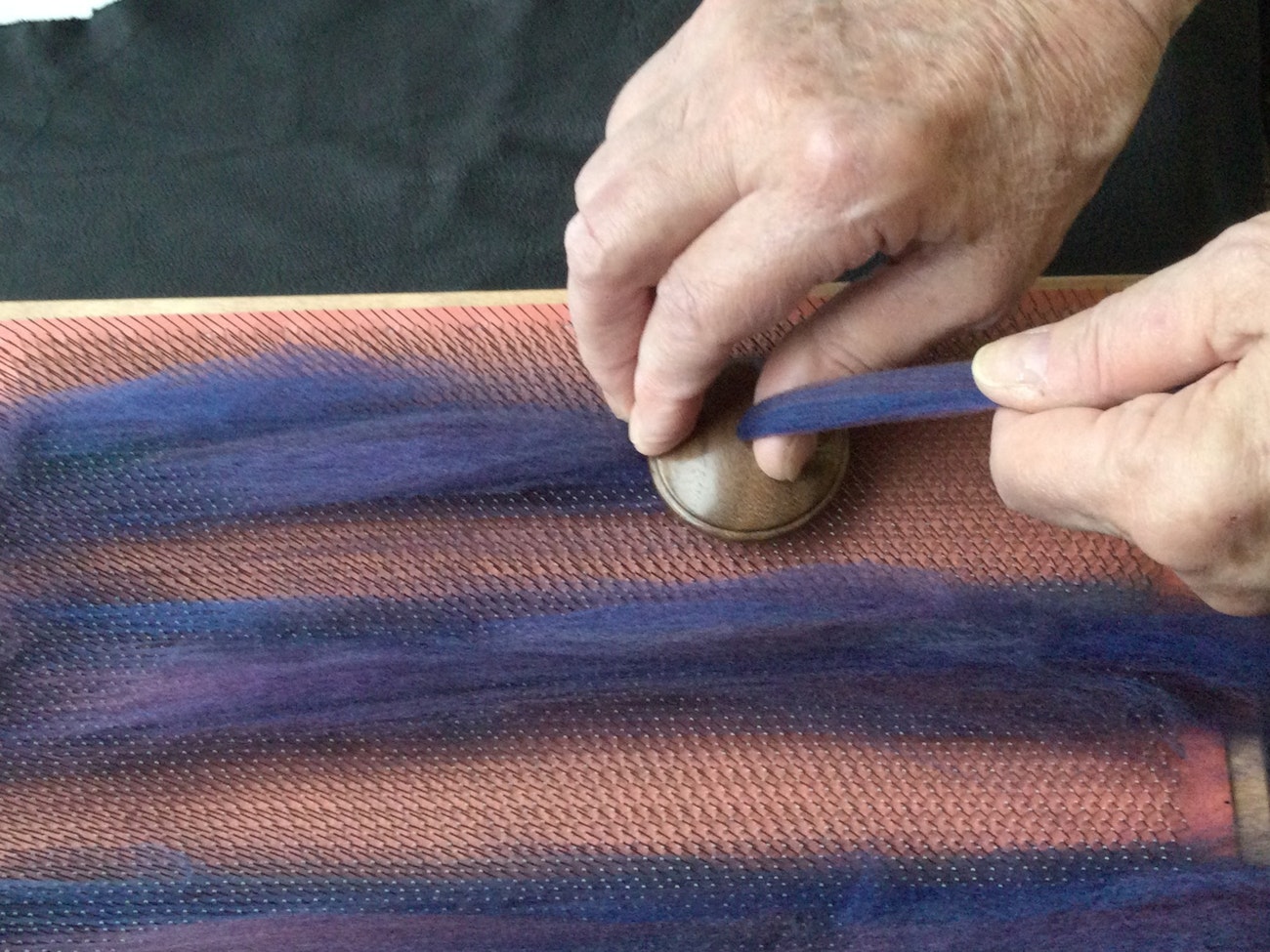
Kim's method for blending fibers on a board using a diz. Photo by Kim McKenna
I began sampling the contrast colors by layering the fibers in the colors I liked to the blending board in one strip; recording the color order as I went. Once I was happy with the color dizzed from the board, I created color formulas: I set aside a strip of each color in the blend, which I call a “root color” and weighed each one. Then, I loaded the blending board in 4–5 strips of fibers, each of the strips containing a blend of my root colors. Then, I weighed the unused portions of root colors to see how much fiber was used in my blends. By determining how much fiber was used, I now had a “color formula.”
CC1, for example, was a blend of Seafoam, Dijon, Matterhorn, a bit of White, Red Eri silk, and Yellow Bombyx silk. The cool thing about this approach is that each carded roving does not have to be an exact match. Close is good enough. To help me with the remainder of blending required for the project, I kept a sample of each of the root colors in the blend, a length of blended roving for color matching, a small sample of handspun, and a chart that recorded the order in which I laid down the root colors.
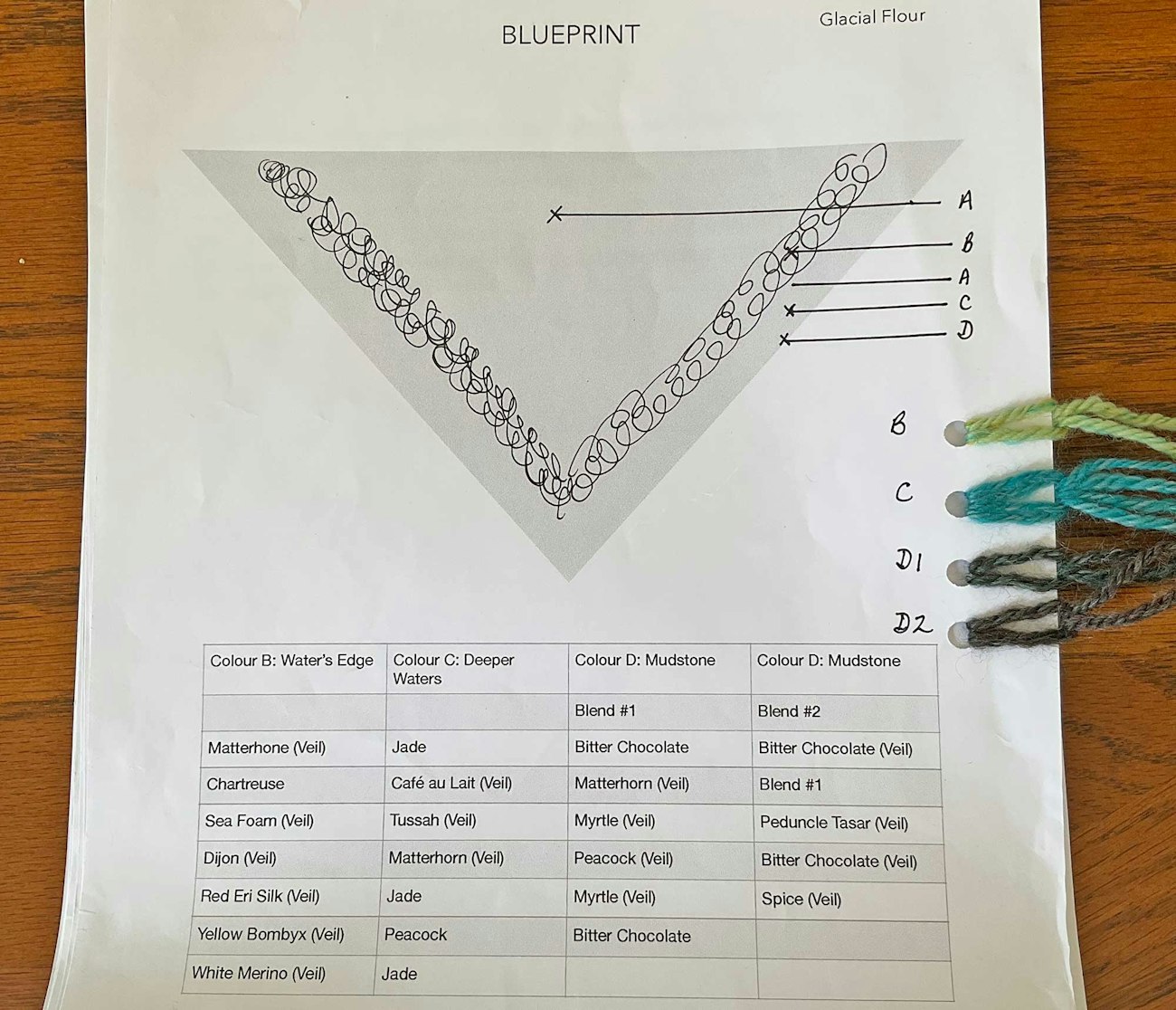
Kim created a “blueprint” for each of her shawls. Here, she has identified where each of her blended colors will appear in the shawl, the root colors within the blends, and small samples of handspun. Photo by Katrina King.
CC2 is a blend of Jade, Café au Lait, Peacock, Matterhorn, and tussah silk. When it came to blending CC3, the result of my first attempt, blend #1 was lackluster. Adding blend #1 to Bitter Chocolate gave this blend more depth and provided a lovely backdrop for sparks of peduncle tasar silk, and Spice.
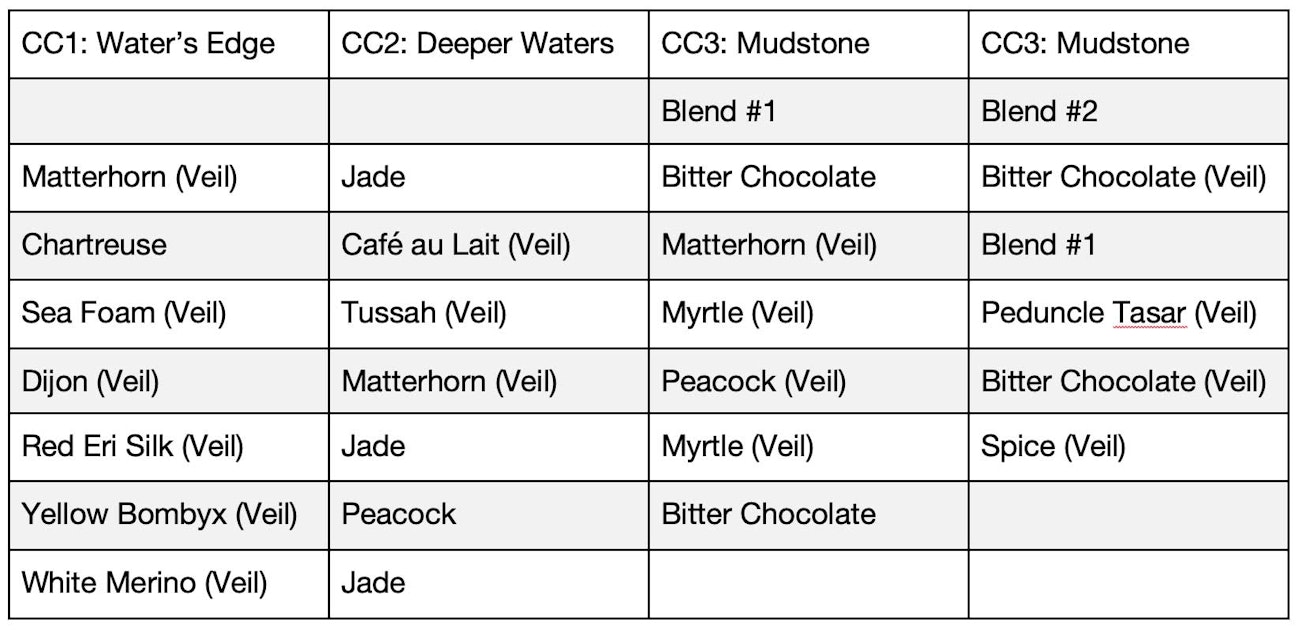
This lists the order in which the fiber was applied to the blend (from top to bottom). “Veil” indicates the addition of just a wisp of fiber. Photo by Kim McKenna
Kim McKenna is constantly learning, researching, and experimenting. She enjoys sharing her discoveries and methods through writing and teaching. Kim teaches virtual workshops through Sanjo Silks, as well as in-person workshops through SweetGeorgia Yarns and the Coniagas Textiles’ Handspinning and Fleece School. Kim also instructs at the School of SweetGeorgia, an online membership-based fiber arts school. You can find her at claddaghfibrearts.com and on Instagram @claddaghfibrearts.

